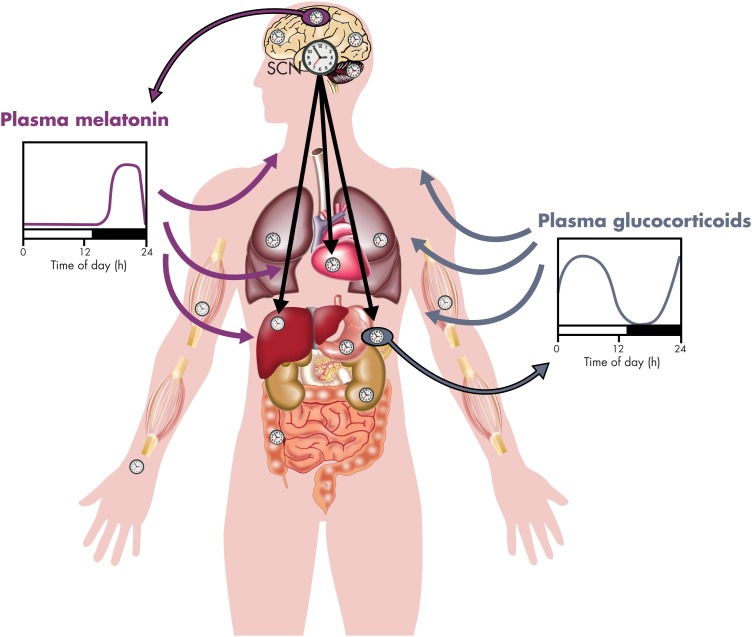Figure 3.
Schematic representation of the pathways involved in the internal synchronization of the central suprachiasmatic (SCN) clock with the peripheral oscillators in the human circadian system. Both direct neural signals (transmitted by the autonomous nervous system, represented by black arrows) and indirect hormonal signals are involved. The 24-hour rhythms of circulating melatonin (released by the pineal gland, represented by a purple circle) and cortisol (released by the adrenals, represented by a blue circle) are considered as primarily controlled by the central SCN clock. In the schematic representations of the melatonin and GC profiles, the black bars represent the sleep/dark period. The blue and purple arrows symbolize, respectively, the synchronizing effects of the GC and melatonin rhythms. Because of the ubiquity of GRs in the entire organism, the 24-hour rhythm of circulating GCs plays a major role in synchronizing central and peripheral clocks. [Modified and redrawn from P. Pevet and E. Challet: Melatonin: both master clock output and internal time-giver in the circadian clocks network. J Physiol Paris. 2011;105(4–6):170–182 (99), with permission. © Elsevier.]

